Full-time RV travel isn’t cheap, not if you want to stay at RV parks and have access to all the amenities. But, we have found a few ways to save money on our travels, without sacrificing, and without boondocking.
RV travel isn’t cheap. It’s actually turning out to be more expensive than we originally estimated. So many full-time RVers share videos and stories of how they manage to live full-time in their RV for under $2000 a month (and some as low as $1000/month). It’s definitely possible with the right setup and locations. But, not so much with our setup or with the locations we’ve chosen for this first trip. Instead we’ve had to find other ways to save money as we travel full-time across the US.
The cheapest way to live full-time in your RV
The cheapest way to live full-time in your RV is boondocking (or mooch-docking). Boondocking is the ability to exist in your RV without the need for any hook-ups (no need for external power, water, or sewer hookups). Obviously, you have to have power and water, but with the right setup your RV can supply these things.
You can power your basic lights and some small things off the on-board batteries, but if you want to run things like your A/C or even your coffeemaker, you’ll need more power. You can get this from a generator. Of course, then you need gas to keep your generator running, and potentially solar to keep the batteries charged. We don’t have either of those (yet). We do have house batteries but they really don’t supply much power beyond a few lights and basic needs.
Most RVs are equipped with on-board water and sewage holding tanks, but that only lasts so long (usually a week to two weeks depending on the size of the tanks), then you have to find a place to refill. We can last the equivalent of four showers before we need to dump our gray water tank, and about a week before we need to need dump our black water tank.
Most people boondock on public land owned by the Bureau of Land Management (BLM). If you can boondock most of the time it can be super cheap. Other options are moochdocking (basically boondocking at a friend or family member’s house where you can get access to limited power/water services.
Cheaper ways to travel
Since we aren’t set up to boondock, we have to find other cheaper ways to travel. We got a bit spoiled during our time in Alabama where the site rent is fairly cheap. We spent most of our first nine months at state parks with a lot rent of about $550/month for full-hookups (electric included).
Traveling (for us) means moving more often than once a month, and daily and weekly rates tend to be a lot higher (many of the private parks we’ve seen don’t even offer weekly rates). We’ve also found that rates are much higher in areas people tend to frequent in the summers. Price is driven by demand, as well as by the fact that most of these parks are making all of their money in just a few short months.
The prices we’ve found in South Dakota tend to average around $50/night. If we were in a smaller RV we could fit in state and local parks that tend to be cheaper than private parks. We could opt for campgrounds with no septic at the site but we like showers and we haven’t quite convinced ourselves to limit taking them to twice a week. So, at this point we feel the need to look for full hook-up sites unless it’s just a quick overnight stop (something we don’t typically do).
Saving money with full hookups
So, if we have to have full hook-ups and we can’t typically stay at the cheaper state parks, how can we save money on the road? For us, the answer has been a combination of being willing to settle for a little less than the best AND discount club cards.
Whenever possible we look for small city parks, such as the one we are staying in now in Gering, NE. Often they provide the same amenities as the larger parks, but at a much lower rate. And, many times those smaller parks are actually much roomier, providing sites that are two or three times larger than typical RV Parks.
Longer stays can mean savings
While we can’t stay a month at a time, even staying a full week can often save us a bit. Many parks we’ve found offer a weekly rate that is equal to 6 nights (or less). We prefer to stay in a spot for at least two weeks so that we can take advantage of having one full weekend in a location, so when possible we look for places that will provide a discount for staying longer.
Often if we are only stopping for a week, we are actually only staying six nights. In those cases, it’s often cheaper to get the weekly rate than it would be to pay for six nights.
Unfortunately, many campgrounds in the more tourist-centric areas don’t offer weekly rates, so it’s not always an option.
If you are able to plan ahead and want to do an extended stay in one location, many campgrounds do offer monthly rates, but they are difficult to get on short notice. For instance, we are heading into Colorado and while we’ve found many campgrounds that offer monthly rates, we’ve found very few that even have availability for more than a single week.
RV camping discount clubs
We know plenty of full-time RVers swear by the likes of Thousand Trails and Coast to Coast clubs but as we’ve looked into those the combination of where the member parks are located and the upfront cost of joining (as well as annual maintenance fees), it didn’t look like they would actually save us money. Instead, we’ve opted for cheaper memberships that give us a bit more flexibility.
Never join before you need the membership.
Instead of just signing up for clubs, we wait until we see that a club will save us money. It would do no good to sign up for a club only to find that we won’t/ can’t stay at a park that uses that club for the next 6 months. Most memberships are annual, so why pay for what we aren’t going to use. We usually sign up for a club because we know we want to book a stay at a park that accepts that club within the next few weeks.
Good Sam
Good Sam was the first discount club that we signed up for. The annual cost was cheap enough that we didn’t feel like we had anything to lose by purchasing the membership. Upon looking at the location of parks that accept it we found many along our initial path as well as in our home area.
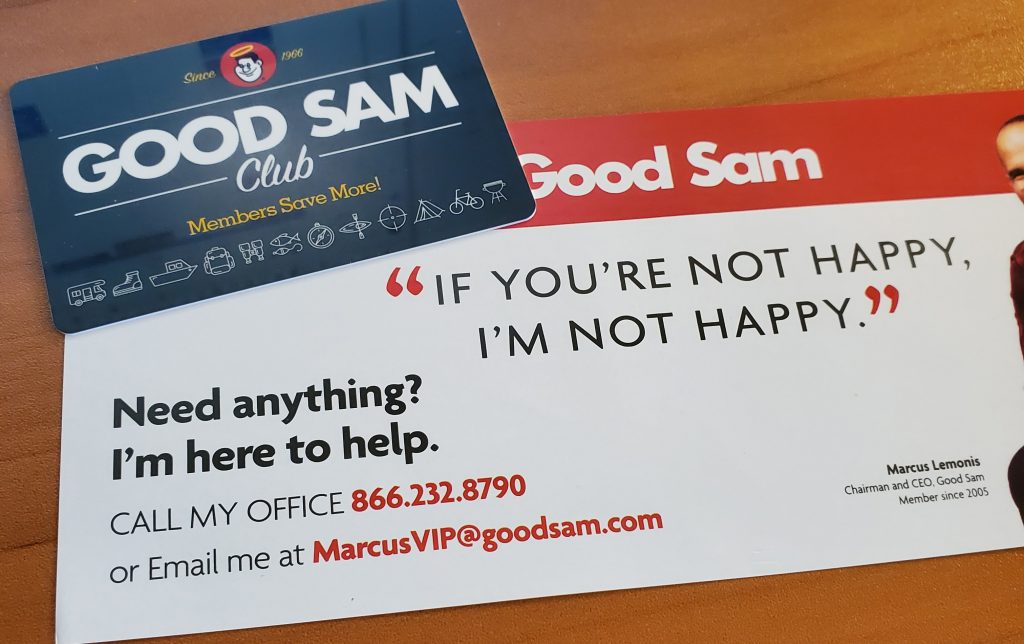
Good Sam saves you 10% off the nightly rate at over 2400 parks across the United States. The key here is nightly rate. While there are some parks that offer a Good Sam discount on weekly (or longer) stays, most only discount nightly rates. The logic is that their weekly and longer rates are already discounted.
Because we were unsure how much use we would get out of it, and didn’t want to commit, we only paid for a 1 year membership at $29. We actually used Good Sam at each of the parks we stayed at on our first trip home with Bessie –
- 2 nights at Seminole Campground in Ft. Myers Florida at a daily rate of $55.
- 1 night at Lake City Campground in Lake City at a daily rate of $40
- 3 nights at Emerald Beach RV Park in Navarre FL at a daily rate of $72
Our membership to Good Sam paid for itself in those first five days in our camper. We saved about $35 using Good Sam on our trip home with Bessie, and have continued to save with it since.
One additional perk of the Good Sam membership is discounts at Camping World. While that’s not our default place to buy camping-related products, we did find ourselves there back at the first of the year when our surge protector blew. Our Good Sam membership saved us quite a bit on that replacement.
While most of the places we stayed during our first nine months in the rig did not accept Good Sam, others did, and even if they hadn’t, Good Sam had already paid for itself. Now that we are 100% on the road we are again making good use of our Good Sam membership and we’ll definitely be renewing in September.
Passport America
We just signed up for Passport America a few weeks into this trip. While most parks advertise that they are part of the Good Sam network of parks, we’ve found that very few publicize their membership in the Passport America program – probably because the discount is much higher.
However, as we began planning our trip west and looking for reasonably priced places to stay in South Dakota, we noticed that a couple of the parks we were interested in advertised that they accept Passport America. After talking to some other full-time RV friends who highly recommended Passport America we decided to go ahead and sign up and give them a try.
Having had a great experience with Good Sam and with a good recommendation from friends, we went ahead and signed up for a two year membership for ~$80, figuring that based on the member parks I’d found, the membership would pay for itself in just a couple of nights.
While Passport America advertises itself as the 50% club, their discount program isn’t quite that simple. Each park sets its own rules for when and how they will accept Passport America. While some parks offer the Passport America discount all the time without limitations (stay as long as you like with that rate), MOST member parks limit you to just a few nights (or even one night) and/or don’t accept Passport America during their busiest seasons.
We did find two parks in the Black Hills of South Dakota that accept Passport America without limitations, and we booked a stay at both of them. Without Passport America the cheapest nightly rate we could find for full hookups was about $50, with most parks charging closer to $80 – as the dates get closer to the Sturgis rally those rates go up approaching $100/night.
The two parks that accepted Passport America without limitations were Elk Creek Resort and Heartland RV Park. We stayed 13 nights at Elk Creek Resort and with Passport America, our nightly rate was just shy of $30. We paid about $43/night for eight nights at Heartland. Each was a vastly different experience. But, the Passport America membership definitely paid for itself in just a couple of nights. And, having that membership allowed us to stay in the Black Hills longer than we would have otherwise.
As we head into Colorado we’ve found again that most Passport America parks do not accept the discount card during the summer, but there are a couple that do. Unfortunately, those were not available, and we’ll just have to rely on Good Sam, and KOA to save a bit.
KOA Value Kard
We’ve never stayed at a KOA (at least not yet), but we have many friends who swear by them. Generally, we have found that they are more expensive than other parks in most areas we’ve traveled through. However, as we head into Denver in a couple of weeks, KOA had the best rate for the parks available during the time we need to stop. So, we’ll be making our first stay.
We went ahead and signed up for the KAO Value Kard. For $33 we’ll save 10% off the daily registration rate for each night we stay. Given that we’ve rarely seen a KOA with a daily rate lower than $50, it will pay for itself during our first stop at a KOA.
In addition to saving 10%/day, the KOA card also allows you to earn points towards free stays. I don’t know if we’ll use it enough for that to matter, but it’s another tool in our savings toolkit now.
Saving money on fuel
While site rent is definitely the largest cost we incur on the road, fuel isn’t cheap. Our truck takes diesel and a lot of it. When we are towing we do good to get 10 miles per gallon. Because of our size, if we need to fill up on the road we are generally limited to truck stops. Truck stops tend to charge a bit more than a mom & pop filling station.
If you’ve filled up in the truck lanes you know it can be a pain because you can’t pay at the pump like you can in the car lanes. You have to walk inside and tell them how much you want, they charge your card, then if you don’t get that full amount you get a credit back later. It’s a hassle.
Enter TSD Logistics
The TSD Logistics fuel card allows us to act like we are truck drivers. Not only can we fill up in the truck lanes, we can pay at the pump, AND we get a discount on our fuel. But, that’s not even the end of the perks of the TSD Logistics card because we can also get up to $200/wk in cash advance off our card at the gas station (without paying ATM fees).
TSD Logistics works at most major truck stop brands including Love’s, Pilot, Flying J, and Sapp Brothers. The discount varies from chain to chain. Another plus for us is that card is attached to your preferred bank account or credit card, so it’s not a separate credit card that you have to keep track of.
We signed up for TSD Logistics just before beginning our trip across the country. So far, it’s saved us between 6-12% each time we’ve refueled. Every little bit adds up.
As we continue our travels we’ll continue to look for new ways to save money on the road. We’d love to hear your tips. What memberships have you found worthwhile? What other ways have you found to save $$ as you travel without boondocking?


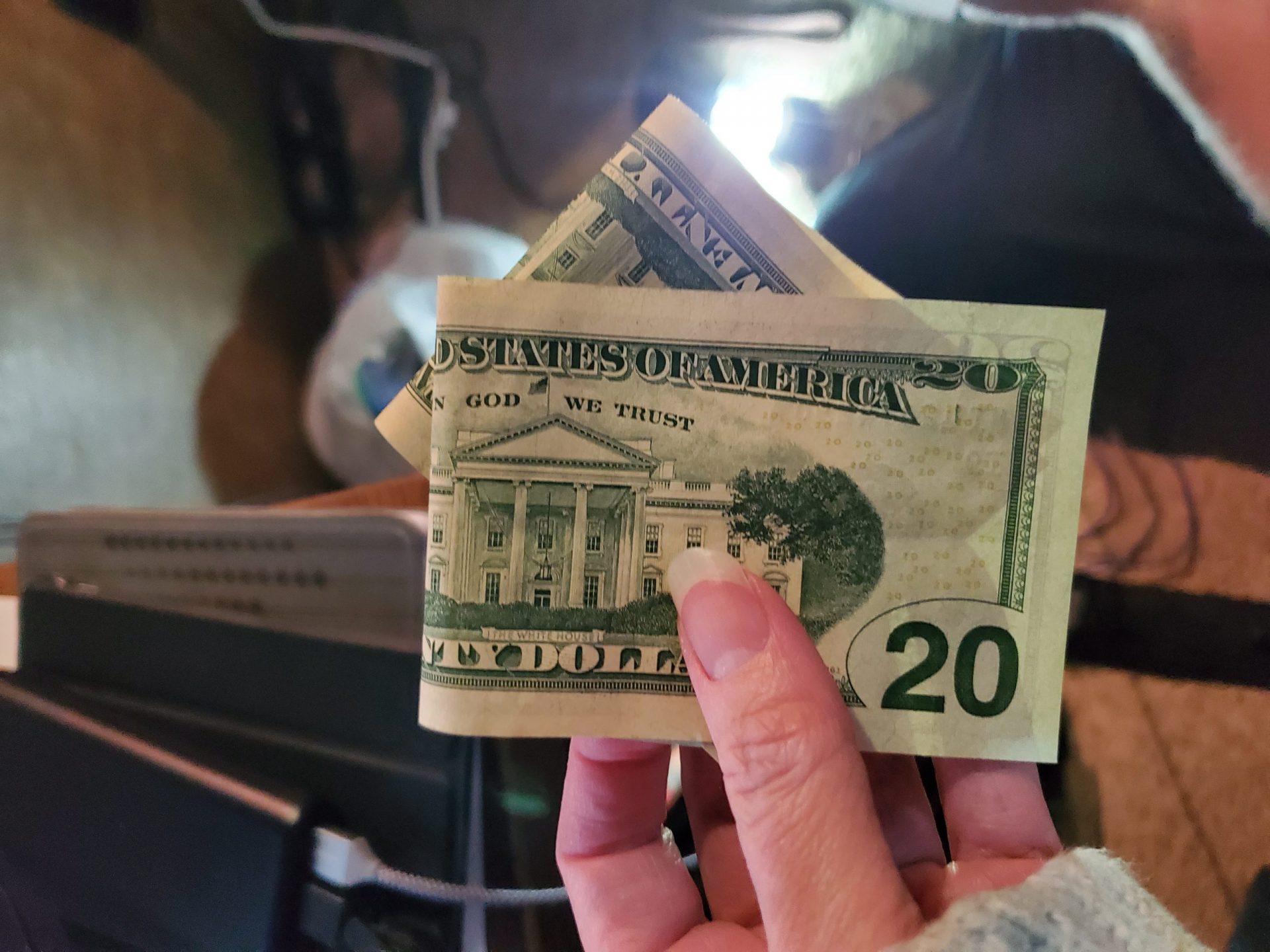

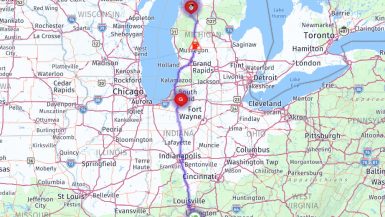
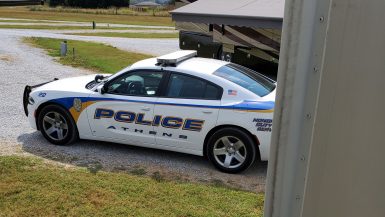
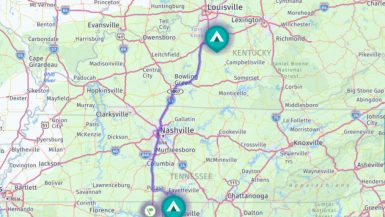
Great post! We are the same way. Boondocking is not a favorite of ours. Mainly for the safety reason.
There’s definitely something to be said for knowing that you are in amongst others. I don’t think I’d feel comfortable boondocking off by ourselves for the same reason.